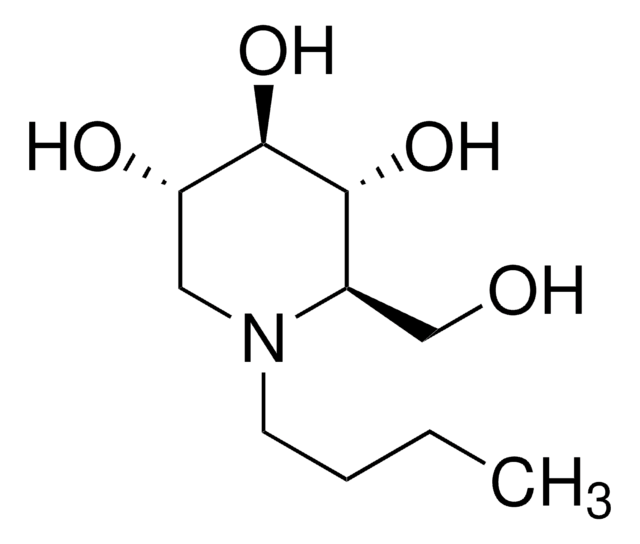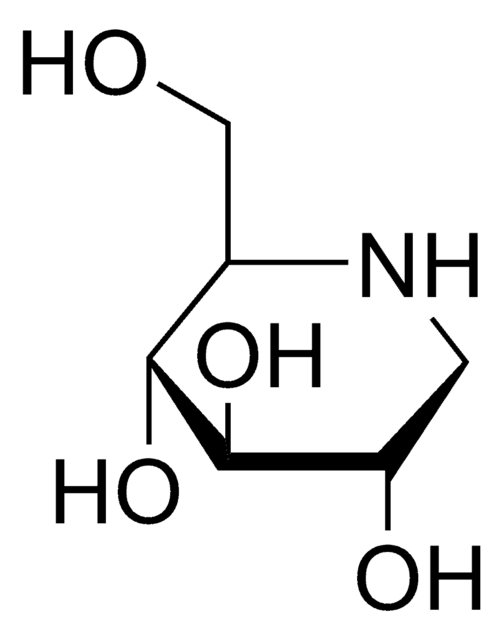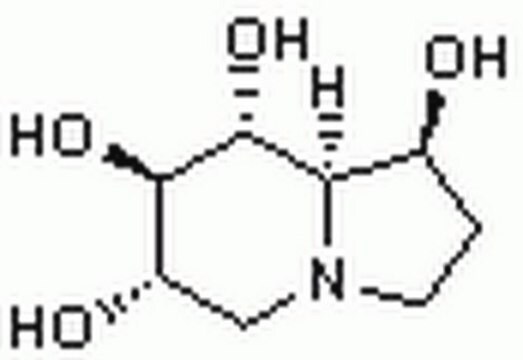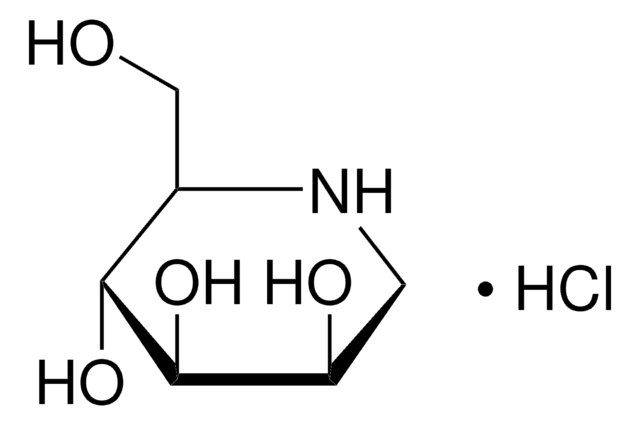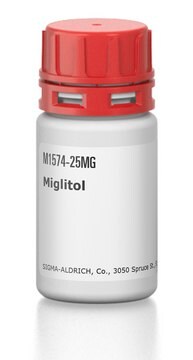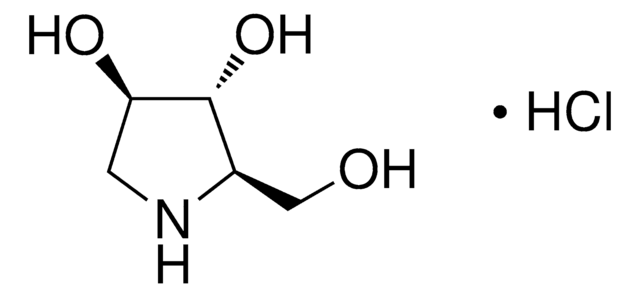D9305
1-Deoxynojirimycin hydrochloride
Synonyme(s) :
1,5-Dideoxy-1,5-imino-D-sorbitol hydrochloride
About This Item
Produits recommandés
Pureté
≥98% (TLC)
Niveau de qualité
Forme
powder
Solubilité
water: 19.60-20.40 mg/mL, clear, colorless
Spectre d'activité de l'antibiotique
viruses
Mode d’action
enzyme | inhibits
Température de stockage
2-8°C
Chaîne SMILES
Cl[H].OC[C@H]1NC[C@H](O)[C@@H](O)[C@@H]1O
InChI
1S/C6H13NO4.ClH/c8-2-3-5(10)6(11)4(9)1-7-3;/h3-11H,1-2H2;1H/t3-,4+,5-,6-;/m1./s1
Clé InChI
ZJIHMALTJRDNQI-VFQQELCFSA-N
Informations sur le gène
human ... GAA(2548)
Vous recherchez des produits similaires ? Visite Guide de comparaison des produits
Catégories apparentées
Description générale
Application
- to study its effects on the loss-of-function of N-glycosylation pathway on hair cell regeneration
- as an endoplasmic reticulum (ER) α-glucosidase I and II inhibitor to study its effects on TMED3-cystic fibrosis transmembrane conductance regulator (CFTR) interaction
- as an insect trehalase inhibitor in TREH inhibition bioassay
Actions biochimiques/physiologiques
Code de la classe de stockage
11 - Combustible Solids
Classe de danger pour l'eau (WGK)
WGK 3
Point d'éclair (°F)
Not applicable
Point d'éclair (°C)
Not applicable
Équipement de protection individuelle
Eyeshields, Gloves, type N95 (US)
Certificats d'analyse (COA)
Recherchez un Certificats d'analyse (COA) en saisissant le numéro de lot du produit. Les numéros de lot figurent sur l'étiquette du produit après les mots "Lot" ou "Batch".
Déjà en possession de ce produit ?
Retrouvez la documentation relative aux produits que vous avez récemment achetés dans la Bibliothèque de documents.
Les clients ont également consulté
Notre équipe de scientifiques dispose d'une expérience dans tous les secteurs de la recherche, notamment en sciences de la vie, science des matériaux, synthèse chimique, chromatographie, analyse et dans de nombreux autres domaines..
Contacter notre Service technique